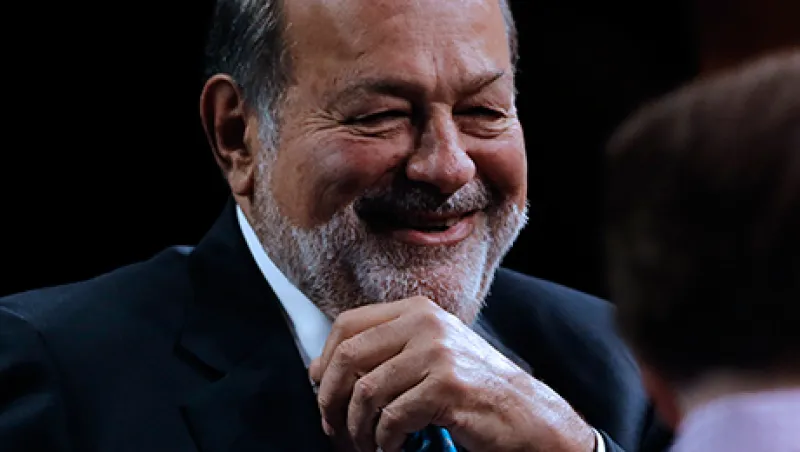Mexico finally passed antitrust regulations last year to loosen the near monopoly that Carlos Slim Helú has held over telephone users. But Slim, 75, retained his ranking on the Forbes list of billionaires as the world’s second-wealthiest person, and he actually increased his personal worth by $5.1 billion, to $77.1 billion. That was largely thanks to the rising share price of América Móvil, the telecom operator that controls 80 percent of Mexico’s landline and 70 percent of its mobile markets — along with sizable operations elsewhere in Latin America.
Why has América Móvil’s stock increased by 6.6 percent over the past 12 months? “Investors reacted very positively to his announcement that he will seek to reduce his market share,” says Eduardo García, founder and editor of Sentido Común, a Mexico City–based online business news site. “They see his new strategy as ultimately beneficial to shareholders.”
Rather than keep fighting the regulators, Slim announced plans last July to reduce his company’s share of the Mexican market to 50 percent. Until he does so, margins at Mexico City–based América Móvil will be squeezed because it can no longer charge rivals for using its network to complete calls to places where they don’t provide service.
Although telecoms account for more than half of his fortune, Slim has built a thriving, diversified business empire that makes it virtually impossible for Mexicans to get through a day without paying for his goods and services — from enchiladas to banking. Grupo Carso, the conglomerate that is 80 percent owned by Slim, gathers together many of these businesses. Among others, they include the Sears Roebuck de México department store chain; the Grupo Sanborns restaurant, drugstore and gift shop chain; CICSA, a major construction and engineering company; and Grupo Condumex, a maker of electric cables and other equipment for the construction and automotive industries. Separately from Grupo Carso, Slim also owns Grupo Financiero Inbursa, the $25.2 billion bank and asset manager, which last December bought the banking unit of Wal-Mart de México for $247 million.
Slim built up these holdings over the past quarter century as Mexico began to sell off state assets to the private sector. They offer no significant synergies. “There is no rationale in holding, say, a retailer and an infrastructure company together,” says Miguel Ulloa, a Mexico City–based analyst who covers Grupo Carso for BBVA Bancomer, the nation’s largest bank. “Mr. Slim just feels comfortable placing them in this structure.”
But, adds Ulloa, investors buy in to Carso in the hopes of benefiting from yet other future Slim bonanzas. One obvious possibility is in the energy field, which is being opened to the private sector by Mexico’s recent reforms. Slim has indicated that he’s especially interested in infrastructure linked to natural gas pipelines and oil drilling. That would be a perfect fit for his CICSA and Condumex units.
According to his closest associates, Slim is becoming more concerned about giving away chunks of his ever-increasing fortune. “He devotes more than half his time to philanthropic activities,” says his son-in-law and spokesman, Arturo Elías Ayub, who heads a Slim foundation, Fundación Telmex. Along with the larger Fundación Carlos Slim, the two charitable entities are involved in an even greater variety of projects than Slim’s businesses. A sampling of his philanthropy includes some 300,000 free bicycles for rural children to help them get to school; maternity care for more than half a million women and their babies; almost a million free surgeries; and free legal support for people accused of nonviolent crimes.
Unfortunately, Slim’s charitable activities haven’t managed their capital as well as his businesses. According to Elías, total assets in U.S. dollar terms of the two foundations have fallen to about $7 billion from more than $8 billion in mid-2013, a gap he attributes to the peso’s weakness against the greenback.






